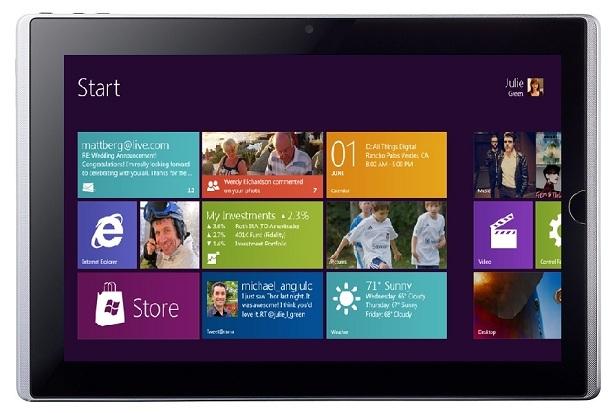Windows 8 requirements for tablets and convertible PCs
Andy Ruffell / 13 years ago

Microsoft is most certainly determined to make Windows 8 a new tablet OS, the list of requirements is a quiet interesting read, although rather long to say the least. If you’re determined, you may read the 1000+ pages long article here.
The requirements not only state a minimum amount of buttons, but also the minimum component set any tablets or convertible PCs will need in order to use Windows 8.
For starters, Microsoft requires ‘5-point digitizers’, meaning it supports at least a hand of fingers on a screen at once. NFC “touchmarks” are also featured in Window 8, in which case any tablet or slat will have to have a sticker of similar signage averting the user of its NFC-capability.
Also required by Microsoft are 5 buttons minimum, which were very specifically detailed with them being Power, Rotation lock, Windows Key, Volume up and Volume down.
A new ‘combo’ has also been put place enforcing Windows 8 PCs joined to a domain and without keyboards to implement a new Ctrl+Alt+Del sequence. While users will still be able to use the on-screen keyboard, the new and quicker option is to press Windows Key + Power.
The following list is the bare minimum for future Windows 8 tablets/convertible PCs:
- Storage: At least 10gb free space after the out-of-box experience completes
- System firmware: UEFI
- Networking: WLAN and Bluetooth 4.0 + LE (low energy)
- Graphics: Direct3D 10 device w/ WDDM 1.2 driver
- Resolution: 1366×768
- Touch support: At least 5 touch points, must pass all tests
- Camera: 720p
- Ambient Light Sensor: 1-30k lux capable w/ dynamic range of 5-60K
- Magnetometer
- Accelerometer: 3 axes w/ data rates >= 50Hz
- Gyroscope
- USB 2.0: At least one controller and exposed port
- Speakers
Additionally, Windows 8 running tablets will need to support no-reboot upgrades, including driver updates (supported since Vista) and graphic card upgrades.
Intel-compatible Windows 8 PCs will further require a 2 second resume time. Note that only Intel-compatible tablets have been subjected to this, thus leaving ARM out of the question, although nothing says this couldn’t change before the release.
Source: WithinWindows



















